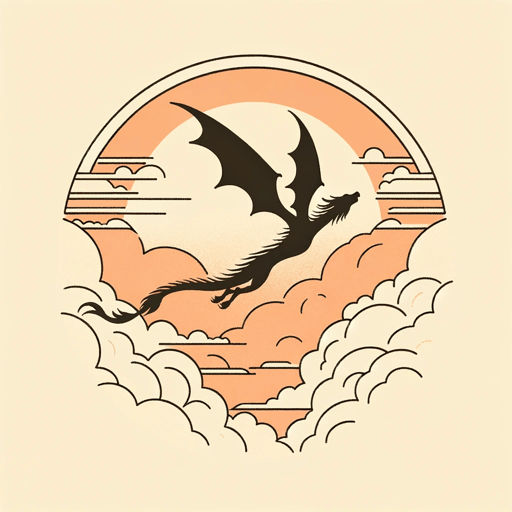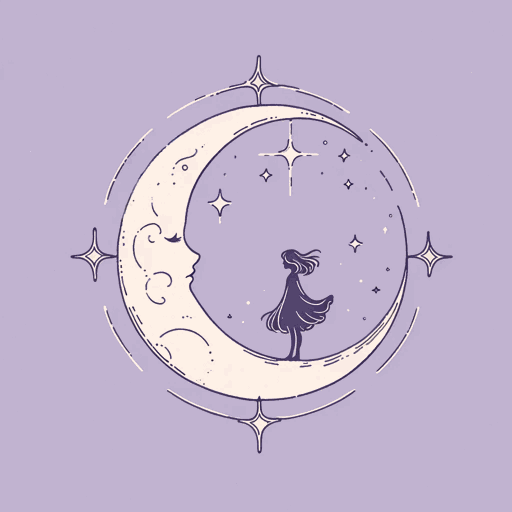61 pages • 2 hours read
Kelly BarnhillWhen Women Were Dragons
Fiction | Novel | Adult | Published in 2022A modern alternative to SparkNotes and CliffsNotes, SuperSummary offers high-quality Study Guides with detailed chapter summaries and analysis of major themes, characters, and more.
Summary and Study Guide
Overview
Written by Kelly Barnhill and published in 2022, When Women Were Dragons is a work of speculative fiction with all the trappings of a realistic novel. True to the genre, Barnhill creates a world in which dragons exist and builds a sober, authentic tone by crafting seemingly historical documents to introduce the narrative, the most dominant of which is a memoir written from the perspective of protagonist Alex Green. Named one of the best fantasy/science fiction books of 2022 by Kirkus Reviews, When Women Were Dragons is Barnhill’s first full-length adult novel. She is otherwise known for her various short stories for adults and novels for young adults, including The Girl Who Drank the Moon, which won the Newbery Medal in 2017. Kelly Barnhill has been a finalist for numerous awards and lives in Minnesota with her husband and three children.
As the novel gains momentum, Barnhill uses a strategic patchwork of memoir and “interstitial” documents that fall between chapters and outside the narrator’s voice. These excerpts create a sense of verisimilitude by hinting at a larger body of “real” accounts of the phenomenon of dragoning. Central to this stylistic choice is Alex’s ongoing memoir, and because she must by definition be an unreliable narrator, it falls upon the reader to parse through her biased statements with the understanding that memory is a fickle thing. In this case, Alex’s remembrances are made even hazier by the societal oppression of a world that seeks to obscure the truth of women’s self-liberation. The use of such a literary device thus creates a world that is convincingly realistic, especially when Barnhill crafts an element of censorship by presenting textual “evidence” whose facts are redacted, obscured, and actively suppressed by those who prefer to deny both the existence of dragons and the reasons for their transformation.
When Women Were Dragons was published in 2022 by Anchor Books. This study guide uses the First Anchor Books Paperback Edition published in 2023.
Plot Summary
Alex Green lives in an America very much like the one that exists today—except that in her world, dragons exist. Alex sees a dragon for the first time when she is four years old, right around the same time her mother, Bertha Green, disappears from her home in rural Wisconsin in the early 1950s. To negotiate the dynamics of her family, Alex quickly learns to be silent, for answers to questions never come and confusion and a lack of explanations comprise the standard approach. Two topics of conversation are particularly taboo and are never discussed in “polite” society: cancer and dragoning (the mysterious process by which some women spontaneously turn into dragons). When Alex’s mother returns home, frail and recovering from chemotherapy, Alex must piece together the major events of her early family life using her childish perspective, as she never receives a cogent explanation from the adults in her life. Marla, Alex’s maternal aunt, comes to care for Bertha while Alex’s father stays at the office or goes on “business trips,” a euphemism for his long-time affair with his secretary, Miss Olson. In his absence, Marla tends to Bertha and to Alex, whose full name is Alexandra—a name she hates to be called. Aunt Marla is the only person who ever calls her Alex.
At family gatherings, Marla frequently discusses her sister’s many talents—namely that Bertha was an excellent mathematician who excelled in her classes and graduated college, a feat made possible only because Marla worked to put her sister through school after their parents died. These facts are a source of contention for everyone—Mr. Green because he thinks education is useless for a woman, Bertha Green because she is a wife and a mother first, and Alex because she doesn’t understand the significance. In an argument, Bertha tells Marla to leave and find a more traditional, “normal” life—one in which she is a wife and mother, and not just an auto mechanic who wears slacks and takes up space. Marla eventually does this, marrying a man named George, who has an alcohol addiction, and birthing a daughter named Beatrice.
As the novel progresses, Barnhill periodically interrupts Alex’s narrative by inserting excerpts of various historical documents that support the historical and current presence of dragons—creatures who were once human (mostly women), and who transform in a fit of rage or desire, sometimes burning down their homes and husbands before flying into the sky. In the Mass Dragoning event of April 25, 1955, 642,987 women turn into dragons and abandon their families, jobs, and communities. The largest dragoning event in history, the unsettling nature of the incident prompts popular opinion to make sense of the occurrence by marking it as a singular one—with no other incidents like it before or since. This is, of course, untrue, and groups like the Wyvern Research Collective, led by a scholar named Dr. Henry Gantz and a fierce librarian named Mrs. Helen Gyzinska, work to reveal the facts and data that government organizations, schools, and the media attempt to obscure.
Throughout the novel, excerpts from archives that are either protected by this collective or written by Dr. Gantz himself reveal various incidents in which people have dragoned—some out of rage, some out of desire, and all in search of freedom. The silenced, repressed society of which Alex and her family and friends are a part stifles its members, who even go so far as to obscure their own memories and identities, as is true for Alex. After the Mass Dragoning, however, the phenomenon becomes increasingly difficult to hide.
Marla, Alex’s aunt, is one of the women who dragons on April 25, 1955, leaving behind her daughter Beatrice, whom Bertha adopts without a word. Beatrice becomes Alex’s sister the same day that so many mothers and sisters fly away, and Bertha never mentions her sister again, not even when her cancer returns and eventually causes her death during Alex’s freshman year of high school. Once Alex’s mother dies, Mr. Green feels that his only duty to Alex and Beatrice is to provide for them financially—and he does so at a pointed distance, unceremoniously moving the girls from their family home to a small, one-room apartment to make room for his new wife and soon-to-be-born son. Thus, abandoned by her father, Alex is left to care for Beatrice and herself alone; both girls are still children, but now Alex must also play the role of a mother.
Alex gets by with help from Mrs. Gyzinska, through whom she is introduced to a greater education and the possibility of new plans for her future. Mrs. Gyzinska helps Alex to prepare for college—a decision that Mr. Green does not support. As Alex makes these plans, Beatrice also plans for her own future—one that most certainly involves dragons. Beatrice is infatuated by them, and Alex relies more and more powerfully upon the stifled silence she has learned to adopt since she was a child—that is, until her Aunt Marla reappears one day with other dragons beside her. After Marla returns and Beatrice begins dragoning in various ways (sometimes her eyes change, sometimes talons appear), Alex realizes that she can no longer deny the need to learn all she can about dragons.
As she learns more about the phenomenon, Alex begins to appreciate, however uncomfortably, what being a dragon means for many women. She isn’t alone in this realization, for as many mothers and wives return in their new forms, their families (and especially their daughters) come to acknowledge the value of dragoning. This partial shift in societal perception results in another group transformation on a smaller scale, an event that comes to be known as the Little Wyrming. Alex, for her part, witnesses many of her peers transform together at the high school prom, dancing and moving together as they shed their smaller skins for a new set of wings and scales. Although Alex doesn’t change with them and doesn’t know whether she can or even wants to, she does realize how beautiful the change can be, and how beautiful women are.
After Little Wyrming, during which many minors become dragons, communities across the country are forced to reckon with facts they have been avoiding for centuries. This transition does not come easily at first, and many dragoned children struggle to find new homes, new ways to go to school, and new ways to find work. Slowly, however, as parents begin to welcome their daughters, wives, and mothers back home, dragons make their way into mainstream society. The lives of both Alex and Beatrice are powerfully affected by this shift because, when Alex goes off to college at the University of Wisconsin, she is supported by four dragons: her Aunt Marla and her partner Edith, and two other dragons named Jeanne and Clara. Together, the four dragons raise Beatrice and build a family while Alex pursues her education and pursues a belated romance with her long-lost partner, Sonja Blomgren.
As the women work together to reconfigure the definitions of family and motherhood, Beatrice struggles to fit into a world that is not big enough to hold her. Alex perceives her adopted sister’s difficulties, and after finally meeting Dr. Gantz and relying upon his expertise, she suggests to her family that Beatrice should transform into a dragon despite her young age, for it is something she was born to do. Once Beatrice transforms, so too, it seems, does the world. Dragons are elected to office, run corporations, and build communities to make the world a better place. Beatrice, for her part, creates a successful non-governmental organization (NGO) that is so successful in bringing world peace that she is awarded the Nobel Peace Prize. Alex, writing her memoir after many years as a successful academic who never dragons, but she does live exactly the life she chooses.
Related Titles
By Kelly Barnhill
Featured Collections
Books that Feature the Theme of...
View Collection
Coming-of-Age Journeys
View Collection
Family
View Collection
LGBTQ Literature
View Collection
Magical Realism
View Collection
Popular Book Club Picks
View Collection
Pride & Shame
View Collection
The Best of "Best Book" Lists
View Collection
Truth & Lies
View Collection



